Central Eurasia in Context
Publisher: University of Pittsburgh Press
Series Editor: Douglas Northrop, University of MichiganSeries Editor: Douglas Northrop, University of MichiganSeries Editor: Douglas Northrop, University of Michigan
Central Eurasia embodies a rich historical legacy that includes some of the world’s greatest art, epic literature, vast empires, nomadic peoples, great urban centers – manifested in a diverse array of cultures and nationalities. For millennia the economic and cultural crossroads of the immense Eurasian land mass, this region has exerted a powerful influence on the history of Europe, Asia, and the Middle East. Combining abundant natural resources and daunting terrain, alternately ignored and coveted by outside powers, this continental heartland is marked by many fault lines of historical and contemporary global conflict and plays a vital role in world politics. Yet for all its importance, Central Eurasia remains insufficiently explored by modern scholarship. Central Eurasia in Context provides a unique and valuable venue for the publication and promotion of the best scholarly work on and from this region.Central Eurasia embodies a rich historical legacy that includes some of the world’s greatest art, epic literature, vast empires, nomadic peoples, great urban centers – manifested in a diverse array of cultures and nationalities. For millennia the economic and cultural crossroads of the immense Eurasian land mass, this region has exerted a powerful influence on the history of Europe, Asia, and the Middle East. Combining abundant natural resources and daunting terrain, alternately ignored and coveted by outside powers, this continental heartland is marked by many fault lines of historical and contemporary global conflict and plays a vital role in world politics. Yet for all its importance, Central Eurasia remains insufficiently explored by modern scholarship. Central Eurasia in Context provides a unique and valuable venue for the publication and promotion of the best scholarly work on and from this region.Central Eurasia embodies a rich historical legacy that includes some of the world’s greatest art, epic literature, vast empires, nomadic peoples, great urban centers – manifested in a diverse array of cultures and nationalities. For millennia the economic and cultural crossroads of the immense Eurasian land mass, this region has exerted a powerful influence on the history of Europe, Asia, and the Middle East. Combining abundant natural resources and daunting terrain, alternately ignored and coveted by outside powers, this continental heartland is marked by many fault lines of historical and contemporary global conflict and plays a vital role in world politics. Yet for all its importance, Central Eurasia remains insufficiently explored by modern scholarship. Central Eurasia in Context provides a unique and valuable venue for the publication and promotion of the best scholarly work on and from this region.
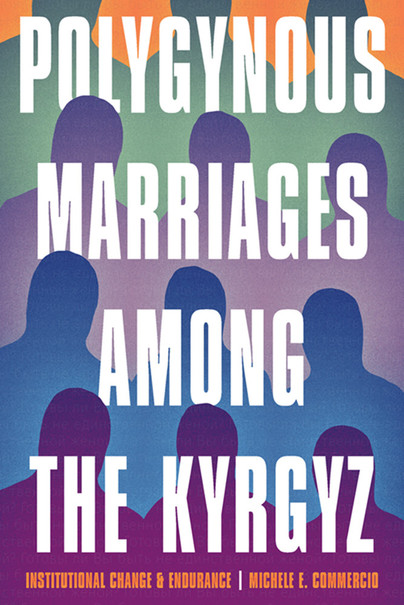
Format: Hardback
Pages: 284
ISBN: 9780822947530
Pub Date: 20 Dec 2022
Description:
During Soviet rule, the state all but imposed atheism on the primarily Islamic people of Kyrgyzstan and limited the tradition of polygyny - a form of polygamy in which one man has multiple wives. Polygyny did continue under communism, though chiefly under concealment. In the decades since the fall of the Soviet Union, the practice has reemerged.
Based on extensive fieldwork, Polygynous Marriages among the Kyrgyz argues that this marriage practice has become socially acceptable and widely dispersed not only because it is rooted in customary law and Islamic practice, but because it can also enable men and women to meet societal expectations and solve practical economic problems that resulted from the fall of the Soviet Union. Michele E. Commercio’s analysis suggests the normalization of polygyny among the Kyrgyz in contemporary Kyrgyzstan is due both to institutional change in the form of altered governmental rules and expectations and to institutional endurance in the form of persistent hegemonic constructions of gender.
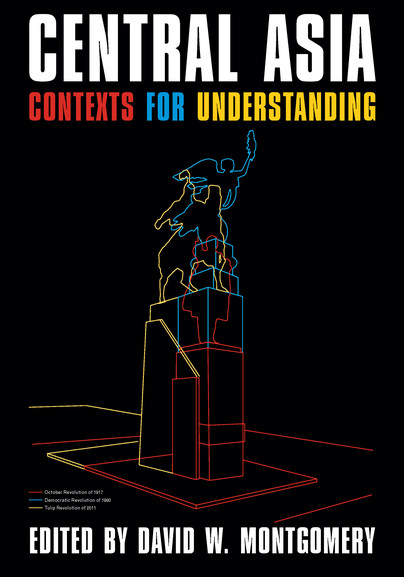
Format: Hardback
Pages: 788
ISBN: 9780822946786
Pub Date: 28 Sep 2022
Illustrations: 10
Description:
Central Asia is a diverse and complex region of the world often characterized in the West as being difficult to access. Central Asia: Contexts for Understanding offers the most comprehensive introduction to the region available. Combining thematic chapters with case studies, readers will learn to appreciate the interconnected aspects of life in Central Asia.
These wide-ranging, easy-to-understand contributions from some of the leading scholars in the field provide the context needed to understand Central Asia and presents a launching-off point for further research.
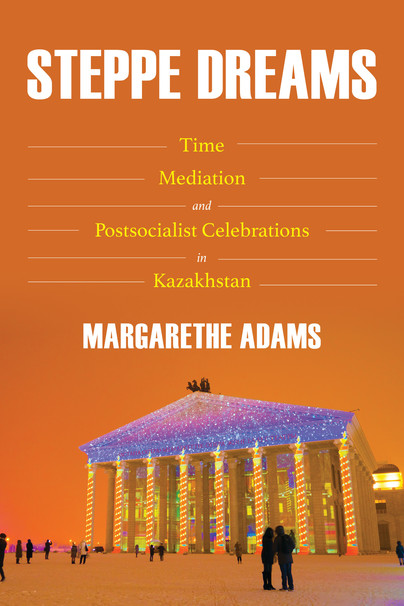
Format: Hardback
Pages: 248
ISBN: 9780822946144
Pub Date: 30 Sep 2020
Illustrations: 25 b&w
Description:
Steppe Dreams concerns the political significance of temporality in Kazakhstan, as manifested in public events and performances, and its reverberating effects in the personal lives of Kazakhstanis. Like many holidays in the post-Soviet sphere, public celebrations in Kazakhstan often reflect multiple temporal framings - utopian visions of the future, or romanticized views of the past - which throw light on present-day politics of identity.
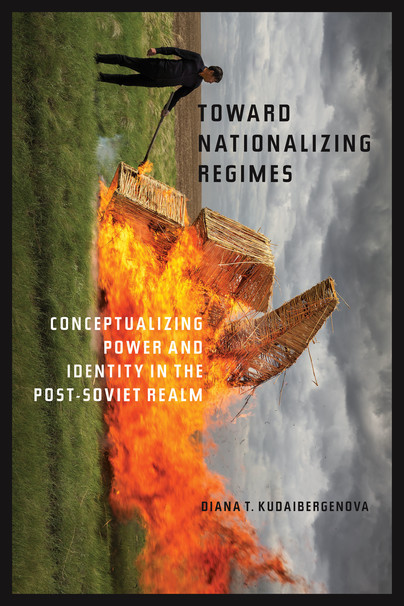
Format: Hardback
Pages: 240
ISBN: 9780822946175
Pub Date: 30 Sep 2020
Description:
The collapse of the Soviet Union famously opened new venues for the theories of nationalism and the study of processes and actors involved in these new nation-building processes. In this comparative study, Kudaibergenova takes the new states and nations of Eurasia that emerged in 1991, Latvia and Kazakhstan, and seeks to better understand the phenomenon of post-Soviet states tapping into nationalism to build legitimacy. What explains this difference in approaching nation-building after the collapse of the Soviet Union?
What can a study of two very different trajectories of development tell us about the nature of power, state and nationalizing regimes of the ‘new’ states of Eurasia? Toward Nationalizing Regimes finds surprising similarities in two such apparently different countries - one “western” and democratic, the other “eastern” and dictatorial.
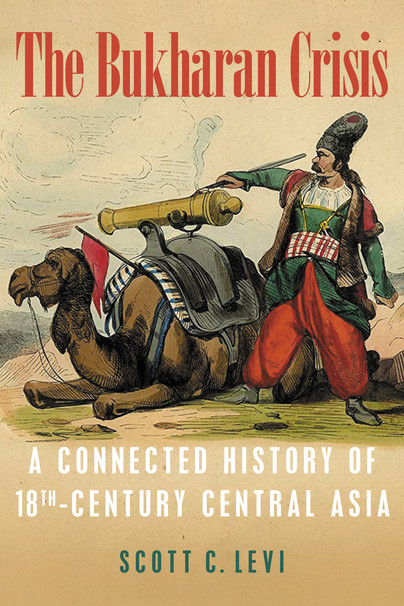
Format: Hardback
Pages: 192
ISBN: 9780822945970
Pub Date: 02 Jun 2020
Illustrations: 28 b&w
Description:
In the first half of the eighteenth century, Central Asia’s Bukharan Khanate descended into a crisis from which it would not recover. Bukharans suffered failed harvests and famine, a severe fiscal downturn, invasions from the north and the south, rebellion, and then revolution. To date, efforts to identify the cause of this crisis have focused on the assumption that the region became isolated from early modern globalizing trends.
The Bukharan Crisis exposes that explanation as a flawed relic of early Orientalist scholarship on the region.
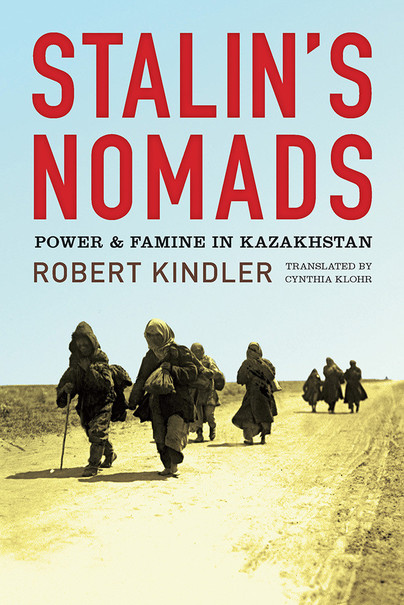
Format: Paperback
Pages: 328
ISBN: 9780822965435
Pub Date: 21 Aug 2018
Illustrations: 14 b&w Illustrations
Description:
Robert Kindler's seminal work is a comprehensive and unsettling account of the Soviet campaign to forcefully sedentarize and collectivize the Kazakh clans. Viewing the nomadic life as unproductive, and their lands unused and untilled, Stalin and his inner circle pursued a campaign of violence and subjugation, rather than attempting any dialog or cultural assimilation. The results were catastrophic, as the conflict and an ensuing famine (1931-1933) caused the death of nearly one-third of the Kazakh population.
Hundreds of thousands of nomads became refugees and a nomadic culture and social order were essentially destroyed in less than five years. Kindler provides an in-depth analysis of Soviet rule, economic and political motivations, and the role of remote and local Soviet officials and Kazakhs during the crisis. This is the first English-language translation of an important and harrowing history, largely unknown to Western audiences prior to Kindler’s study.The translation of this work was funded by Geisteswissenschaften International – Translation Funding for Work in the Humanities and Social Sciences from Germany, a joint initiative of the Fritz Thyssen Foundation, the German Federal Foreign Office, the collecting society VG WORT and the Börsenverein des Deutschen Buchhandels (German Publishers & Booksellers Association).
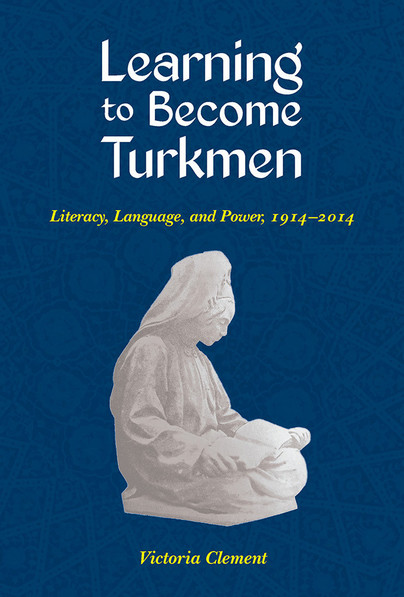
Format: Paperback
Pages: 302
ISBN: 9780822964636
Pub Date: 11 May 2018
Illustrations: 16 b&w Illustrations
Description:
Learning to Become Turkmen examines the ways in which the iconography of everyday life—in dramatically different alphabets, multiple languages, and shifting education policies—reflects the evolution of Turkmen society in Central Asia over the past century. As Victoria Clement shows, the formal structures of the Russian imperial state did not affect Turkmen cultural formations nearly as much as Russian language and Cyrillic script. Their departure was also as transformative to Turkmen politics and society as their arrival.
Complemented by extensive fieldwork, Learning to Become Turkmen is the first book in a Western language to draw on Turkmen archives, as it explores how Eurasia has been shaped historically. Revealing particular ways that Central Asians relate to the rest of the world, this study traces how Turkmen consciously used language and pedagogy to position themselves within global communities such as the Russian/Soviet Empire, the Turkic cultural continuum, and the greater Muslim world.
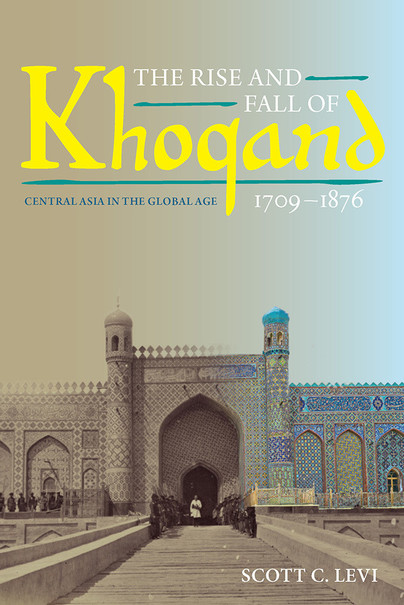
Format: Paperback
Pages: 288
ISBN: 9780822965060
Pub Date: 30 Nov 2017
Illustrations: 26 b&w Illustrations
Description:
This book analyzes how Central Asians actively engaged with the rapidly globalizing world of the eighteenth and nineteenth centuries. In presenting the first English-language history of the Khanate of Khoqand (1709–1876), Scott C. Levi examines the rise of that extraordinarily dynamic state in the Ferghana Valley.
Levi reveals the many ways in which the Khanate’s integration with globalizing forces shaped political, economic, demographic, and environmental developments in the region, and he illustrates how these same forces contributed to the downfall of Khoqand. To demonstrate the major historical significance of this vibrant state and region, too often relegated to the periphery of early modern Eurasian history, Levi applies a “connected history” methodology showing in great detail how Central Asians actively influenced policies among their larger imperial neighbors—notably tsarist Russia and Qing China. This original study will appeal to a wide interdisciplinary audience, including scholars and students of Central Asian, Russian, Middle Eastern, Chinese, and world history, as well as the study of comparative empire and the history of globalization.

Format: Paperback
Pages: 248
ISBN: 9780822965084
Pub Date: 15 Nov 2017
Illustrations: 48 b&w Illustrations
Description:
From Belonging to Belief presents a nuanced ethnographic study of Islam and secularism in post-Soviet Central Asia, as seen from the small town of Bazaar-Korgon in southern Kyrgyzstan. Opening with the juxtaposition of a statue of Lenin and a mosque in the town square, Julie McBrien proceeds to peel away the multiple layers that have shaped the return of public Islam in the region. She explores belief and nonbelief, varying practices of Islam, discourses of extremism, and the role of the state, to elucidate the everyday experiences of Bazaar-Korgonians.
McBrien shows how Islam is explored, lived, and debated in both conventional and novel sites: a Soviet-era cleric who continues to hold great influence; popular television programs; religious instruction at wedding parties; clothing; celebrations; and others. Through ethnographic research, McBrien reveals how moving toward Islam is not a simple step but rather a deliberate and personal journey of experimentation, testing, and knowledge acquisition. Moreover she argues that religion is not always a matter of belief - sometimes it is essentially about belonging. From Belonging to Belief offers an important corrective to studies that focus only on the pious turns among Muslims in Central Asia, and instead shows the complex process of evolving religion in a region that has experienced both Soviet atheism and post-Soviet secularism, each of which has profoundly formed the way Muslims interpret and live Islam.
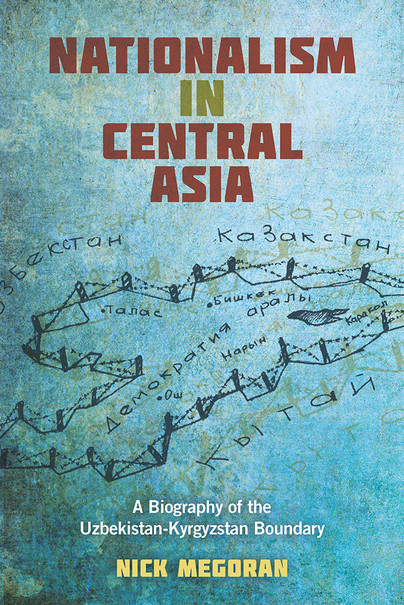
Format: Paperback
Pages: 368
ISBN: 9780822964421
Pub Date: 05 Sep 2017
Description:
Nick Megoran explores the process of building independent nation-states in post-Soviet Central Asia through the lens of the disputed border territory between Uzbekistan and Kyrgyzstan. In his rich "biography" of the boundary, he employs a combination of political, cultural, historical, ethnographic, and geographic frames to shed new light on nation-building process in this volatile and geopolitically significant region. Megoran draws on twenty years of extensive research in the borderlands via interviews, observations, participation, and newspaper analysis.
He considers the problems of nationalist discourse versus local vernacular, elite struggles versus borderland solidarities, boundary delimitation versus everyday experience, border control versus resistance, and mass violence in 2010, all of which have exacerbated territorial anxieties. Megoran also revisits theories of causation, such as the loss of Soviet control, poorly defined boundaries, natural resource disputes, and historic ethnic clashes, to show that while these all contribute to heightened tensions, political actors and their agendas have clearly driven territorial aspirations and are the overriding source of conflict. As this compelling case study shows, the boundaries of the The Ferghana Valley put in succinct focus larger global and moral questions of what defines a good border.
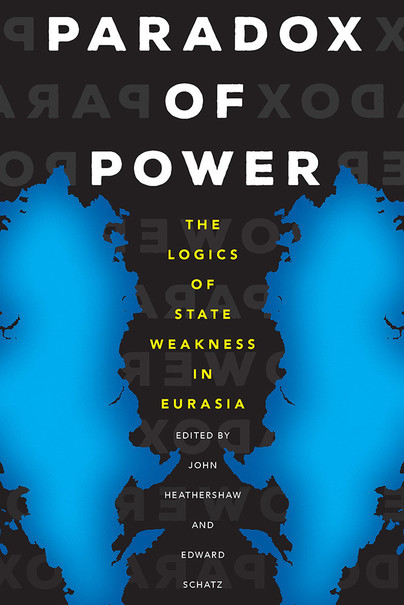
Format: Paperback
Pages: 344
ISBN: 9780822964414
Pub Date: 03 Aug 2017
Description:
"State weakness" is seen to be a widespread problem throughout Central Asia and other parts of post-socialist space, and more broadly in areas of the developing world. Challenging the widespread assumption that these "weak states" inevitably slide toward failure, Paradox of Power takes careful stock of the varied experiences of Eurasian states to reveal a wide array of surprising outcomes. The case studies show how states teeter but do not collapse, provide public goods against all odds, interact with societies in creative ways, utilize coercion effectively against internal opponents, and establish practices that are far more durable than the language of "weakness" would allow.
While deepening our understanding of the phenomenon in Eurasia in particular, the essays also contribute to more general theories of state weakness.
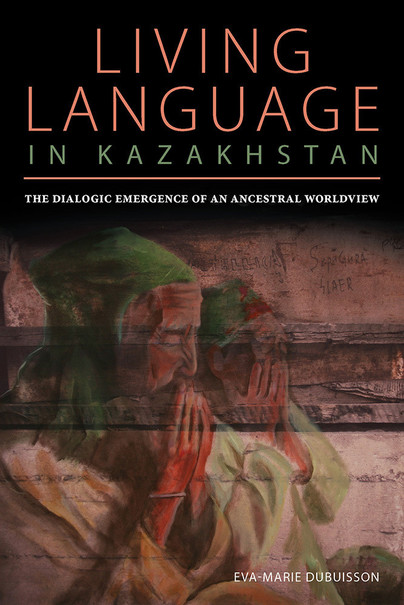
Format: Paperback
Pages: 224
ISBN: 9780822964605
Pub Date: 19 Jun 2017
Description:
Eva-Marie Dubuisson provides a fascinating anthropological inquiry into the deeply ingrained presence of ancestors within the cultural, political, and spiritual discourse of Kazakhs. In a climate of authoritarianism and economic uncertainty, many people in this region turn to their forebearers for care, guidance, and advice, invoking them on a daily basis. This "living language" creates a powerful link to the past and a stable foundation for the present.
Through Dubuisson's participatory, observational, and lived experience among Kazakhs, we witness firsthand the public performances and private rituals that show how memory and identity are sustained through an oral tradition of invoking ancestors. This ancestral dialogue sustains a unifying worldview by mediating questions of faith and morality, providing role models, and offering a mechanism for socio-political critique, change, and meaning-making. Looking beyond studies of Islam or heritage alone, Dubuisson provides fresh insights into understanding the Kazakh worldview that will serve students, researchers, GMOs, and policymakers in the region.
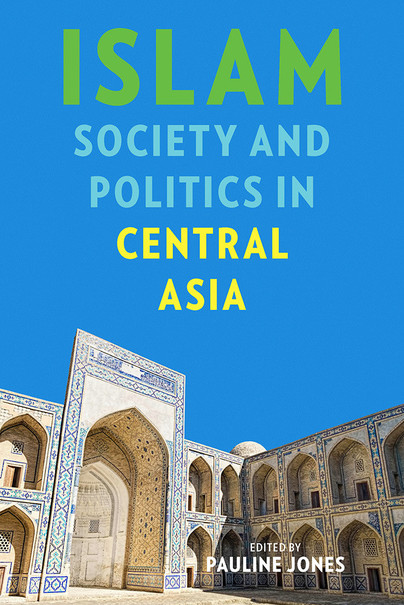
Format: Paperback
Pages: 392
ISBN: 9780822964278
Pub Date: 16 May 2017
Description:
During the 1990s, there was a general consensus that Central Asia was witnessing an Islamic revival after independence, and that this occurrence would follow similar events throughout the Islamic world in the prior two decades, which had negative effects on both social and political development. Twenty years later, we are still struggling to fully understand the transformation of Islam in a region that's evolved through a complex and dynamic process, involving diversity in belief and practice, religious authority, and political intervention. This volume seeks to shed light on these crucial questions by bringing together an international group of scholars to offer a new perspective on Central Asian states and societies.
The chapters provide analysis through four distinct categories: the everyday practice of Islam across local communities; state policies toward Islam, focusing on attempts to regulate public and private practice through cultural, legal, and political institutions and how these differ from Soviet policies; how religious actors influence communities in the practice of Islam, state policies towards the religion, and subsequent communal responses to state regulations; and how knowledge of and interaction with the larger Islamic world is shaping Central Asia's current Islamic revival and state responses. The contributors, a multidisciplinary and international group of leading scholars, develop fresh insights that both corroborate and contradict findings from previous research, while also highlighting the problem of making any generalizations about Islam in individual states or the region. As such, this volume provides new and impactful analysis for scholars, students, and policy makers concerned with Central Asia.
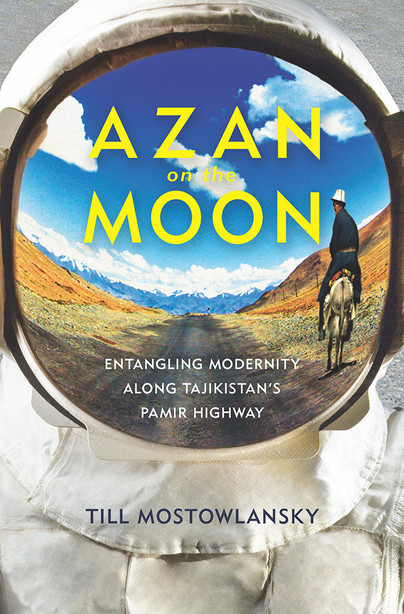
Format: Paperback
Pages: 224
ISBN: 9780822964438
Pub Date: 18 Apr 2017
Description:
Azan on the Moon is an in-depth anthropological study of people's lives along the Pamir Highway in eastern Tajikistan. Constructed in the 1930s in rugged high-altitude terrain, the road fundamentally altered the material and social fabric of this former Soviet outpost on the border with Afghanistan and China. The highway initially brought sentiments of disconnection and hardship, followed by Soviet modernization and development, and ultimately a sense of distinction from bordering countries and urban centers that continues to this day.
Based on extensive fieldwork and through an analysis of construction, mobility, technology, media, development, Islam, and the state, Till Mostowlansky shows how ideas of modernity are both challenged and reinforced in contemporary Tajikistan. In the wake of China's rise in Central Asia, people along the Pamir Highway strive to reconcile a modern future with a modern past. Weaving together the road, a population, and a region, Azan on the Moon presents a rich ethnography of global connections.

Format: Paperback
Pages: 248
ISBN: 9780822964209
Pub Date: 07 Dec 2016
Description:
The Force of Custom presents a finely textured ethnographic study that sheds new light on the legal and moral ordering of everyday life in northwestern Kyrgyzstan. Through her extensive fieldwork and firsthand experience, Judith Beyer reveals how Kyrgyz in Talas province negotiate proper behavior and regulate disputes by invoking custom, known to the locals as salt. While salt is presented as age-old tradition, its invocation is shown to be a highly developed and flexible rhetorical strategy that people adapt in order to meet the challenges of contemporary political, legal, economic, and religious environments.
Officially, codified state law should take precedence when it comes to dispute resolution, yet the unwritten laws of salt and the increasing importance of Islamic law provide the standards for ordering everyday life. As Beyer further demonstrates, interpretations of both Islamic and state law are also intrinsically linked to salt. By interweaving case studies on kinship, legal negotiations, festive events, mourning rituals, and political and business dealings, Beyer shows how salt is the binding element in rural Kyrgyz social life and how it is used to explain and negotiate moral behavior and to postulate communal identity. In this way, salt provides a time-tested, sustainable source of authentication that defies changes in government and the shifting tides of religious movements.
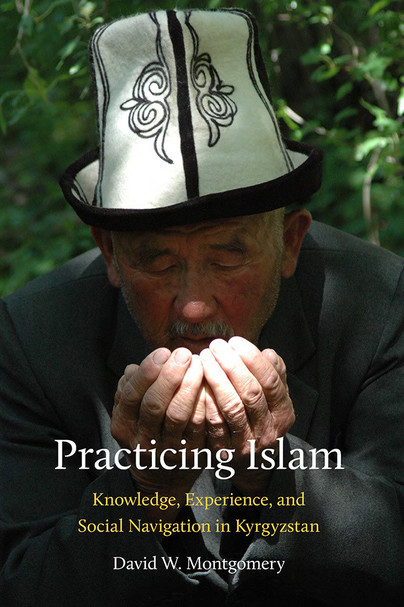
Format: Paperback
Pages: 240
ISBN: 9780822964285
Pub Date: 15 Nov 2016
Description:
David W. Montgomery presents a rich ethnographic study on the practice and meaning of Islamic life in Kyrgyzstan. As he shows, becoming and being a Muslim are based on knowledge acquired from the surrounding environment, enabled through the practice of doing.
Through these acts, Islam is imbued in both the individual and the community. To Montgomery, religious practice and lived experience combine to create an ideological space that is shaped by events, opportunities, and potentialities that form the context from which knowing emerges. This acquired knowledge further frames social navigation and political negotiation. Through his years of on-the-ground research, Montgomery assembles both an anthropology of knowledge and an anthropology of Islam, demonstrating how individuals make sense of and draw meanings from their environments. He reveals subtle individual interpretations of the religion and how people seek to define themselves and their lives as "good" within their communities and under Islam. Based on numerous in-depth interviews, bolstered by extensive survey and data collection, Montgomery offers the most thorough English-language study to date of Islam in post-Soviet Kyrgyzstan. His work provides a broad view into the cognitive processes of Central Asian populations that will serve students, researchers, and policymakers alike.
















